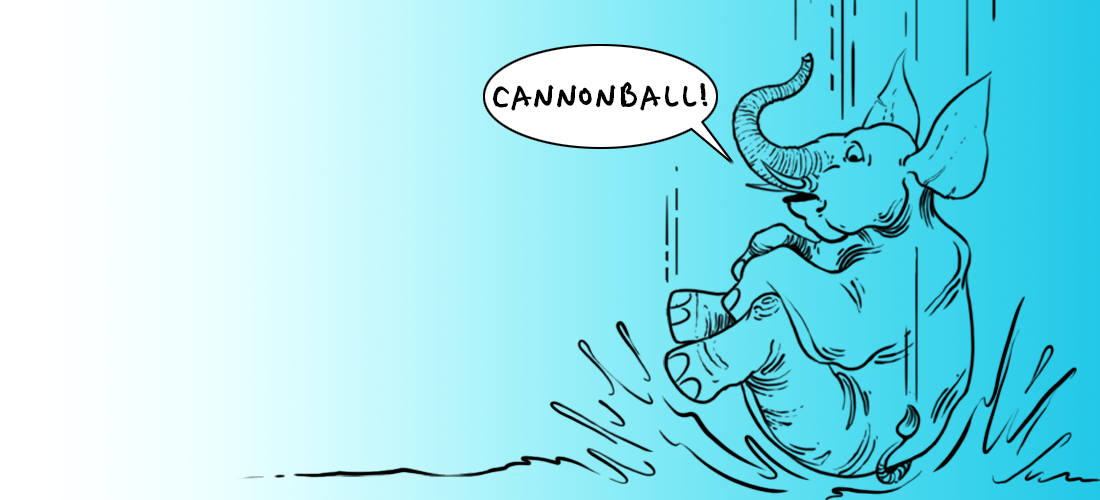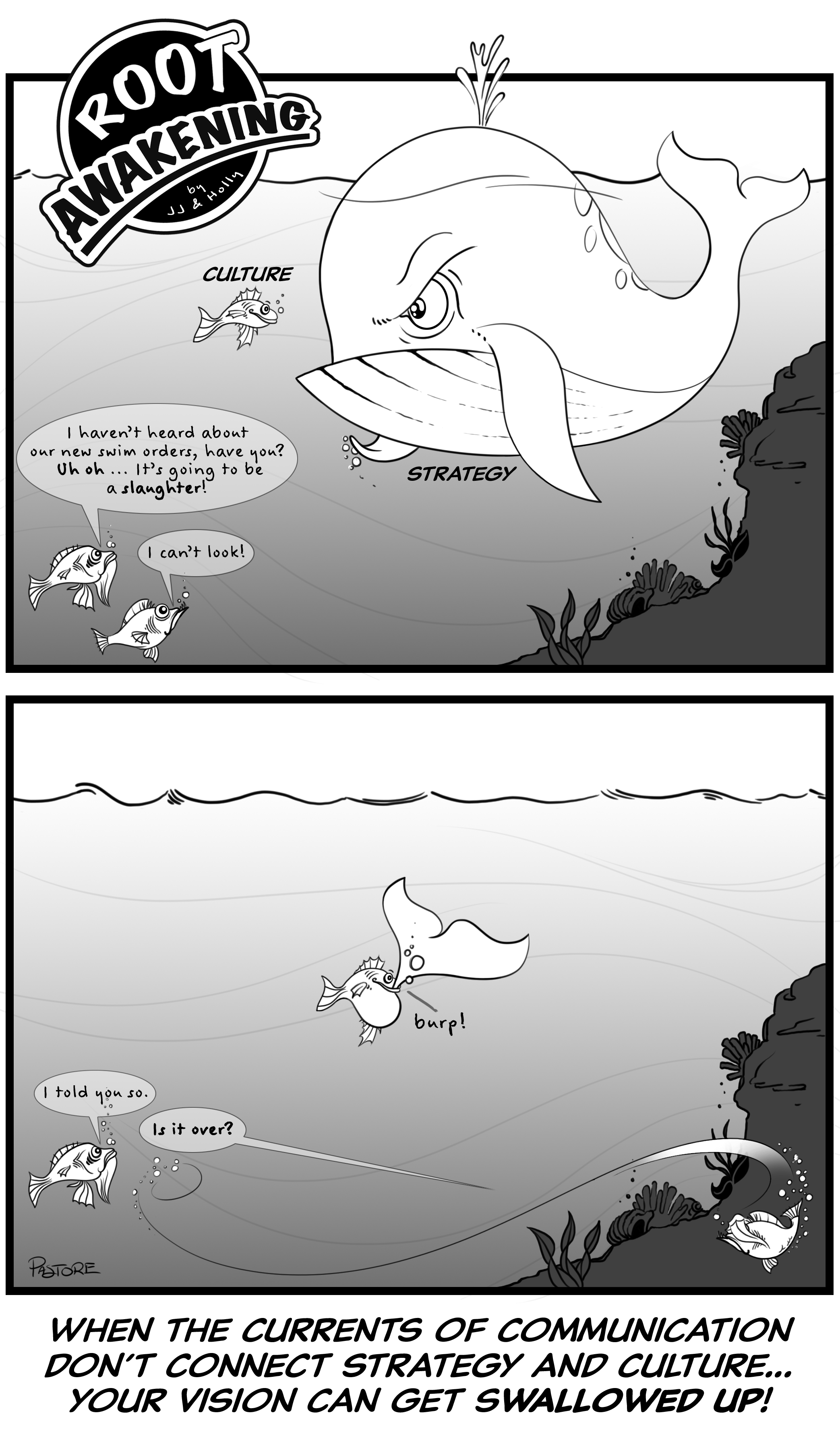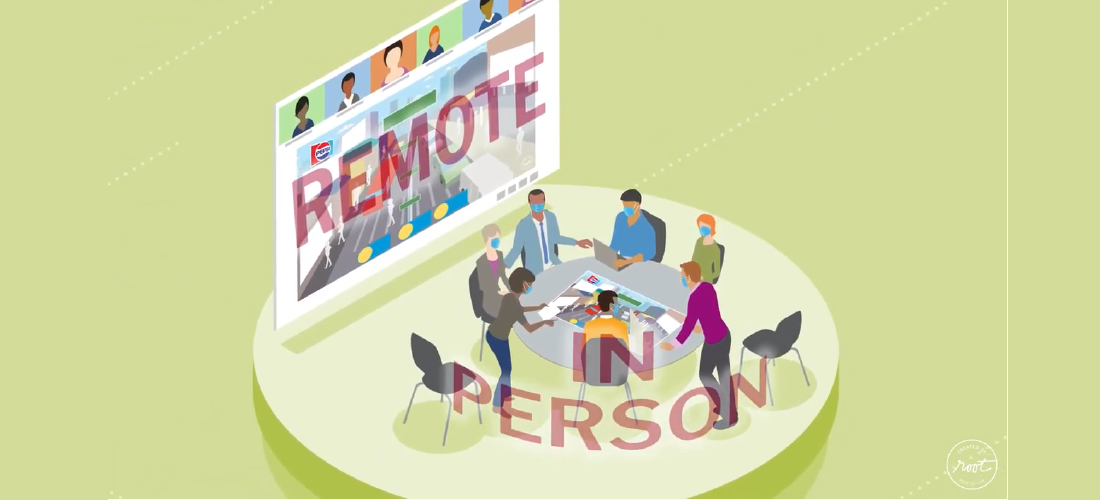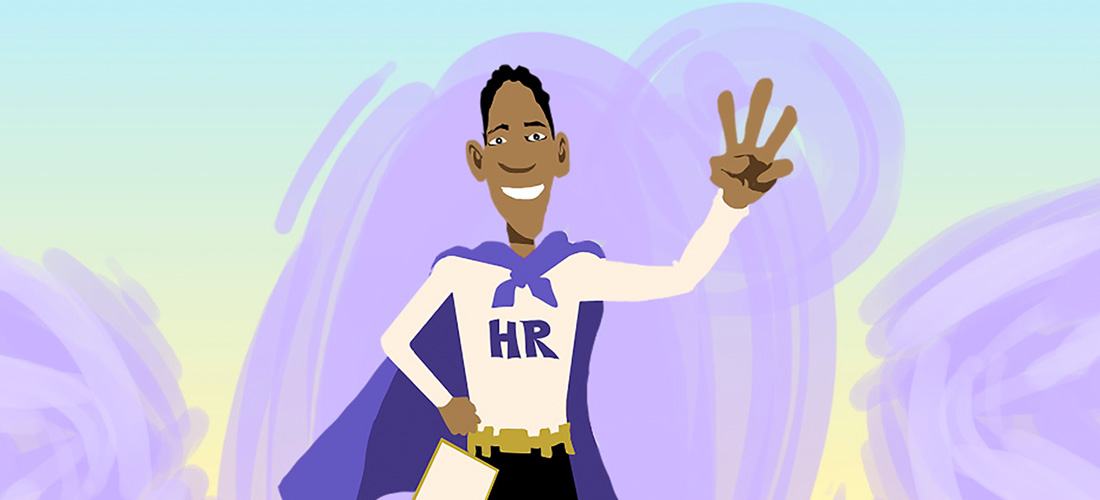Why should you consider strategic visualization? You might be surprised by the answer!
I’ve had the great privilege of working with executive teams across all industries over the past 20 years. Simply put, my job is to listen and draw stories. It’s to draw not just the words people are speaking but what they are actually saying. Essentially, I draw truth – truth in a strategy and why change is necessary. I draw marketplace truths. Sometimes, I even draw truths in the silos that exist within leadership teams.
Throughout my experience, I’ve witnessed a consistent sequence of emotional responses that surface as the clients work through the process. They typically follow this order:
- Reservation,
- Curiosity,
- Engagement,
- Alignment, and
- A collective need to act.
It’s a pretty solid curve that, if properly sustained, leads to strategic and willful change.
So, how’s it all work at Root?
We use art in a non-traditional way. We use the creation process to help draft strategies and align. We also provide the process and the guidance that enables a group’s collective wisdom and innate creativity to come forth. We then use that alignment to develop company-wide, strategic engagement materials, such as the Root Learning Map® experience, because strategy without alignment and execution is just words on a page.
When the rubber meets the road
You’ve tried it. PowerPoint decks and townhall meetings rarely beget true change. They are a check-the-box item that produces check-the-box results.
Opt In For Root Emails
Get the best insights and stories delivered to your inbox.
Add Your Email Address
But let’s be honest and go a level deeper. The real reason direct communication doesn’t work is because humans work for you. Humans come with all kinds of agendas, emotions, and, well, life stuff. If you want to successfully communicate your ideas or your strategy, the least enjoyable and most ineffective way is through direct communication. The content lacks context and emotion, and without the ability to establish a connection, it’s quickly forgotten or blatantly discarded. The thrill of discovery in storytelling creates an emotional path that goes straight to the heart. It sinks deep and is not easily forgotten. Get people to actually think about your point or what you are trying to communicate by affecting how they feel. Whether your audience agrees with your ideas or not, they’ll typically be more open to discussing them.
At this point, you have your audience’s attention! Now they are eager to forget about the status quo and help create the next chapter of the collective story.
Using strategic visualization in your business
Root has been helping our clients leverage the power of visual storytelling for decades. We know firsthand that integrating comics with research, data, and structured dialogue is an effective way to embrace the future.
I’d like to share four key characteristics that strategic visualization epitomizes.
- Strategic visualization taps into an innate form of communication we’ve been using since the beginning of recorded human history.
- Strategic visualization disarms sensitive topics.
- Strategic visualization suspends disbelief.
- Strategic visualization has powerful alignment and engagement properties.
Over the course of subsequent posts, I will share an in-depth look at each of the characteristics above and clarify why it’s a great idea to engage your organization with visual stories.









